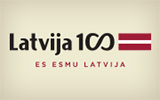Daugavpils | About Daugavpils | Daugavpils history »
Daugavpils history »
The beginnings of Daugavpils are associated with the Daugava trade route, which during the feudal times was one of the most important trade routes in Eastern Europe. Historical sources first mention Daugavpils in 1275 when the crusading Livonian Knights under the 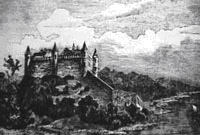 orders of master Ernst von Ratzeburg, built a stone fortress, Dyneburg, on the site of the Latgallian wooden fortress Vecpils (located in what is known today as Naujenes parish). After the dissolution of the Livonian Order in 1566, when the territories of the present-day Latgale and Vidzeme were incorporated into the Grand Duchy of Lithuania, Dyneburg became the capital of the Polish region called Inflanty Voivodeship (an administrative division in the Polish- Lithuanian Commonwealth) and received the coat of arms. In 1577 the fortress was razed to the ground by the troops of
orders of master Ernst von Ratzeburg, built a stone fortress, Dyneburg, on the site of the Latgallian wooden fortress Vecpils (located in what is known today as Naujenes parish). After the dissolution of the Livonian Order in 1566, when the territories of the present-day Latgale and Vidzeme were incorporated into the Grand Duchy of Lithuania, Dyneburg became the capital of the Polish region called Inflanty Voivodeship (an administrative division in the Polish- Lithuanian Commonwealth) and received the coat of arms. In 1577 the fortress was razed to the ground by the troops of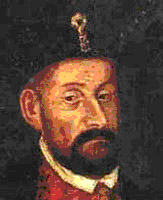 Ivan the Terrible. However this border post, where the interests of Russia, Poland and sometimes Sweden intersected, could not be left unfortified, therefore Ivan the Terrible began the construction of a new fortress 19 km downstream from the old fortress. Like the whole Latgale region, the fortress built on the banks of the Šuņupe river by the troops of the Russian czar, passed under Polish rule after the Livonian War. In 1582, the king of Poland, Stefan Batory granted Dyneburg Magdeburg rights of town, thus providing it with opportunities for further development. The advent of Jesuit missionaries in Dyneburg marked significant changes in the development of the city. It became the centre of Christian missionary activity in Latgale.
Ivan the Terrible. However this border post, where the interests of Russia, Poland and sometimes Sweden intersected, could not be left unfortified, therefore Ivan the Terrible began the construction of a new fortress 19 km downstream from the old fortress. Like the whole Latgale region, the fortress built on the banks of the Šuņupe river by the troops of the Russian czar, passed under Polish rule after the Livonian War. In 1582, the king of Poland, Stefan Batory granted Dyneburg Magdeburg rights of town, thus providing it with opportunities for further development. The advent of Jesuit missionaries in Dyneburg marked significant changes in the development of the city. It became the centre of Christian missionary activity in Latgale.
After the Truce of Altmark, Dyneburg became the administrative centre of Latgale. In 1647 according to the decision of Seim of Poland, Dyneburg became the site for reloading of grain and other goods. The economy of the city developed rapidly. It was administrated by an elder and four advisors appointed by the king.
In 1656 battles between Russian and Swedish troops took place along the Daugava river. On the feast day of saints Boris and Gleb, the Russians captured Dyneburg and czar Aleksey Mihailovitch renamed the town Borisoglebsk. Renovation of the fortress began, the wooden church of Boris and Gleb was erected, residents returned to the city, however Dyneburg was soon handed over to Poland and was reorganized into the administrative centre of Latgale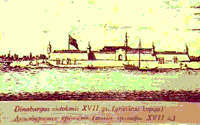 and the bishop's residence. Due to activities of the Jesuits in Dyneburg, soon a cathedral was constructed and the catholic theological seminary was established there and the polish nobility moved to the city.
and the bishop's residence. Due to activities of the Jesuits in Dyneburg, soon a cathedral was constructed and the catholic theological seminary was established there and the polish nobility moved to the city.
In 1772, after the first partition of Poland, Dyneburg was ceded to Russia and it became the capital of Polock province. Afterwards it was included into Vitebsk province. In 1810, due to strained relations between Russian Empire and France, it was decided to rebuild the small fortress of Dyneburg into the first class fortress with a defence zone.
The most important changes in the economic life of Dyneburg appeared after the 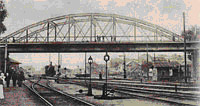 construction of the railway - in 1860 railway line Petersburg - Warsaw connected Dyneburg with Petersburg and in year 1862 with Warsaw. In 1861 a railway connected Riga and Dyneburg. In 1893, by order of Russian emperor Alexander III, Dyneburg was renamed Dvinsk.
construction of the railway - in 1860 railway line Petersburg - Warsaw connected Dyneburg with Petersburg and in year 1862 with Warsaw. In 1861 a railway connected Riga and Dyneburg. In 1893, by order of Russian emperor Alexander III, Dyneburg was renamed Dvinsk.
When the Republic of Latvia gained its independence city received a new name - Daugavpils.
During Latvia's first era of independence, Daugavpils economy and cultural life bloomed. Ethnic composition of Daugavpils residents comprised: Latvians (34%), Jews (25%), Poles (18%), Russians (18%) and Byelorussians (3%). There were 602 industrial enterprises, 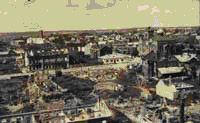 majority of them were small.
majority of them were small.
During World War II Daugavpils was severely damaged. The major part of the city was destroyed in July, 1944.
During the post-war years industry and economic life in Daugavpils were gradually re-established. Several large factories were constructed: locomotive repair factory, driving-chain factory, electric tools factory and other plants, including the largest enterprise of chemical industry in Latvia - Daugavpils Chemical fibre factory.
A tram system began operation in 1946.
Grīva town was joined to Daugavpils in 1956.
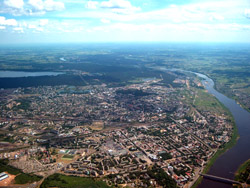 History of the city determines the present of Daugavpils. The favourable geographical location is still the most important factor for development of the city. Daugavpils is a great railway junction, which favours the development of industry as well. There are several great metal-processing enterprises in Daugavpils, food production and light industries are well developed as well. Small and medium-sized businesses are actively participating in the economy of the city. Due to Daugavpils University, the Theatre (renovated in 1988) and a variety of national cultural societies, Daugavpils have become a significant centre of culture and education in Latgale.
History of the city determines the present of Daugavpils. The favourable geographical location is still the most important factor for development of the city. Daugavpils is a great railway junction, which favours the development of industry as well. There are several great metal-processing enterprises in Daugavpils, food production and light industries are well developed as well. Small and medium-sized businesses are actively participating in the economy of the city. Due to Daugavpils University, the Theatre (renovated in 1988) and a variety of national cultural societies, Daugavpils have become a significant centre of culture and education in Latgale.
Being the second largest city of Latvia, Daugavpils makes itself recognizable by large-scale projects in the future and great deeds today.

